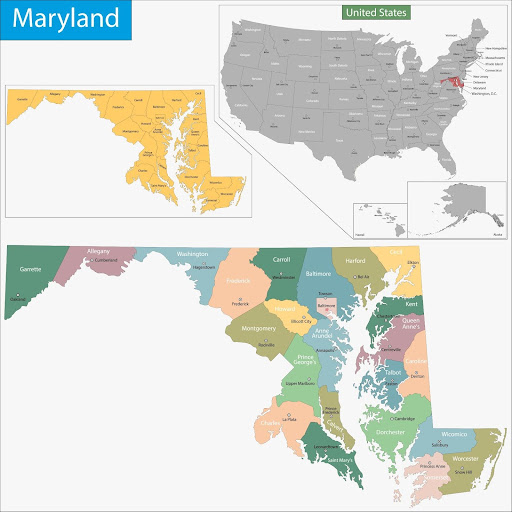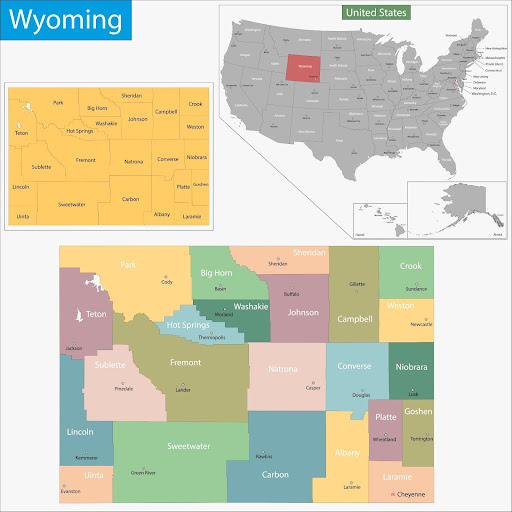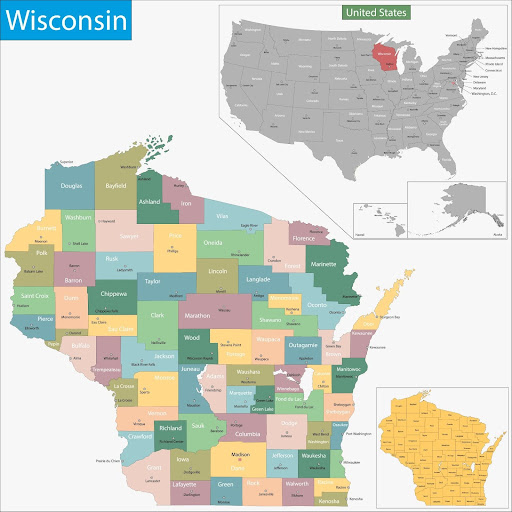Table of Contents
From pine stands on the Eastern Shore to rugged terrain in the Appalachians, Maryland's wildfire threats are driven more by proximity to homes, human-caused ignitions, and changing weather than by massive acreages. But that doesn’t mean fire investigators can afford to take it lightly.
This guide on wildland fire resources in Maryland outlines the agencies, terrain, and training infrastructure that define wildland fire investigation in Maryland.
See related info on our wildland fire resources page.
Live Incident Updates & Maps
Use this live tool to track current wildfire activity and risk in Maryland:
State Overview
Maryland’s terrain makes for a diverse fire profile. The eastern half of the state features flat, sandy pine and oak forests that can ignite and spread rapidly in dry conditions. Western Maryland, by contrast, is mountainous, with steep slopes, harder fuels, and access challenges.
- Eastern Shore & Coastal Plain: High sand content and pine-heavy vegetation make this region the most fire-prone. Fires spread fast in dry conditions, especially during spring.
- Piedmont Region: More suburban development and fragmented forest cover. Investigators often deal with WUI cases, backyard burns, and campfire-related ignitions.
- Western Maryland (Appalachians): Fuel loads are higher, and topography complicates access and suppression. Wildfires here may burn deeper and persist longer, especially in duff and heavy leaf litter.
Many fires are small in size but close to homes, schools, and roadways, elevating risk and the need for precise investigation.
Wildfire Season Timeline
Maryland has two primary wildfire seasons:
- Spring (Mid-February to Early May): Peak fire window. Dead leaf litter, dry grasses, and spring winds make for fast-spreading fires, especially in pine stands.
- Fall (October–Mid-December): A secondary season as leaf fall accumulates and humidity drops. Many fires are debris-related.
Burn bans and Red Flag warnings can be issued quickly and are usually enforced by local jurisdictions in coordination with the Maryland Forest Service.
Key State Agencies Involved
Local Wildland Firefighting Resources
Initial response in Maryland typically falls to local departments. Mutual aid across county lines is common, and the Maryland Fire Chiefs Association maintains coordination frameworks.
List of Local/State/Federal Fire Response Agencies
Contact Numbers and Emergency Links
- To Report a Wildfire: Dial 911
- Maryland Forest Service Fire Headquarters: (410) 260-8501 | dnr.maryland.gov
- Maryland State Fire Marshal: (410) 386-3000 | mdsp.maryland.gov
- Burn Permit & Fire Weather Info: mde.maryland.gov
Training & Volunteering
Maryland offers a number of NWCG-compliant training programs and seasonal opportunities for volunteers.
NWCG-Approved Academies and Centers
Volunteer and Seasonal Training Opportunities
Stay Informed on Maryland’s Wildland Fire Landscape
In Maryland, wildfires are usually small but serious. Investigators must move fast, document carefully, and often collaborate with local and state responders. Patterns are shifting, with longer dry spells and increased development along forest edges.
To stay ready:
- Check daily fire danger ratings at DNR’s wildfire page
- Subscribe to MACC updates for interagency activity
- Participate in seasonal refreshers and FI-210 updates
- Network with local VFD officers and DNR Forest Rangers
Knowing the fuel is half the battle. In Maryland, the other half is knowing the neighborhood.
FAQs
How do I report a wildfire in Maryland?
Call 911. Dispatch will route your report to local fire or DNR units.
Are burn permits required?
Yes, in many counties. Always check with your county fire marshal or DNR regional office.
Who investigates wildfires in Maryland?
The Maryland Forest Service leads investigations on wildland fires. Arson or criminal cases are supported by the State Fire Marshal.
Can I get red card certified in Maryland?
Yes. Through MAWFA, MFRI, or the Maryland Forest Service training programs. Many departments offer refresher and S-series courses seasonally.










